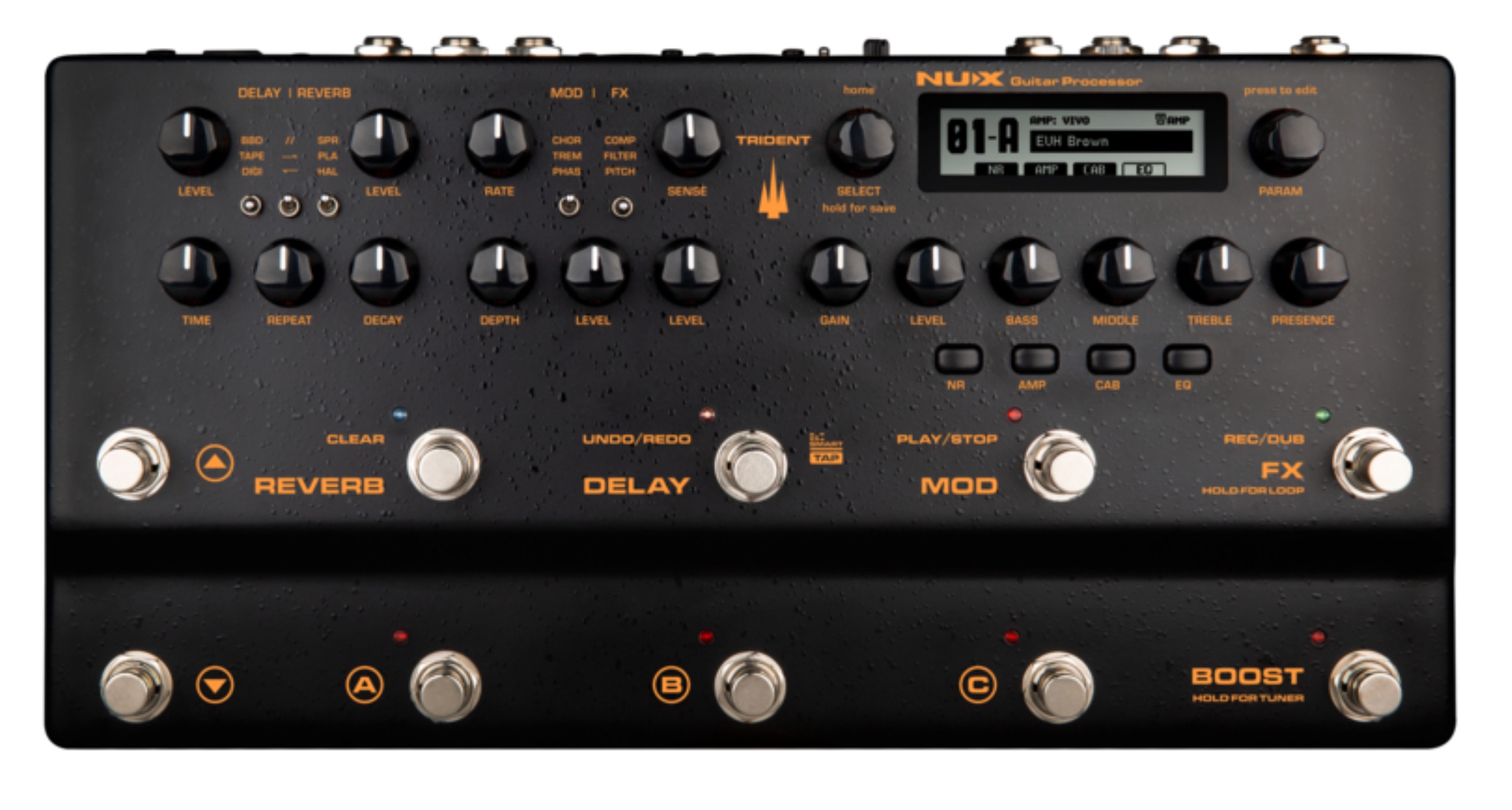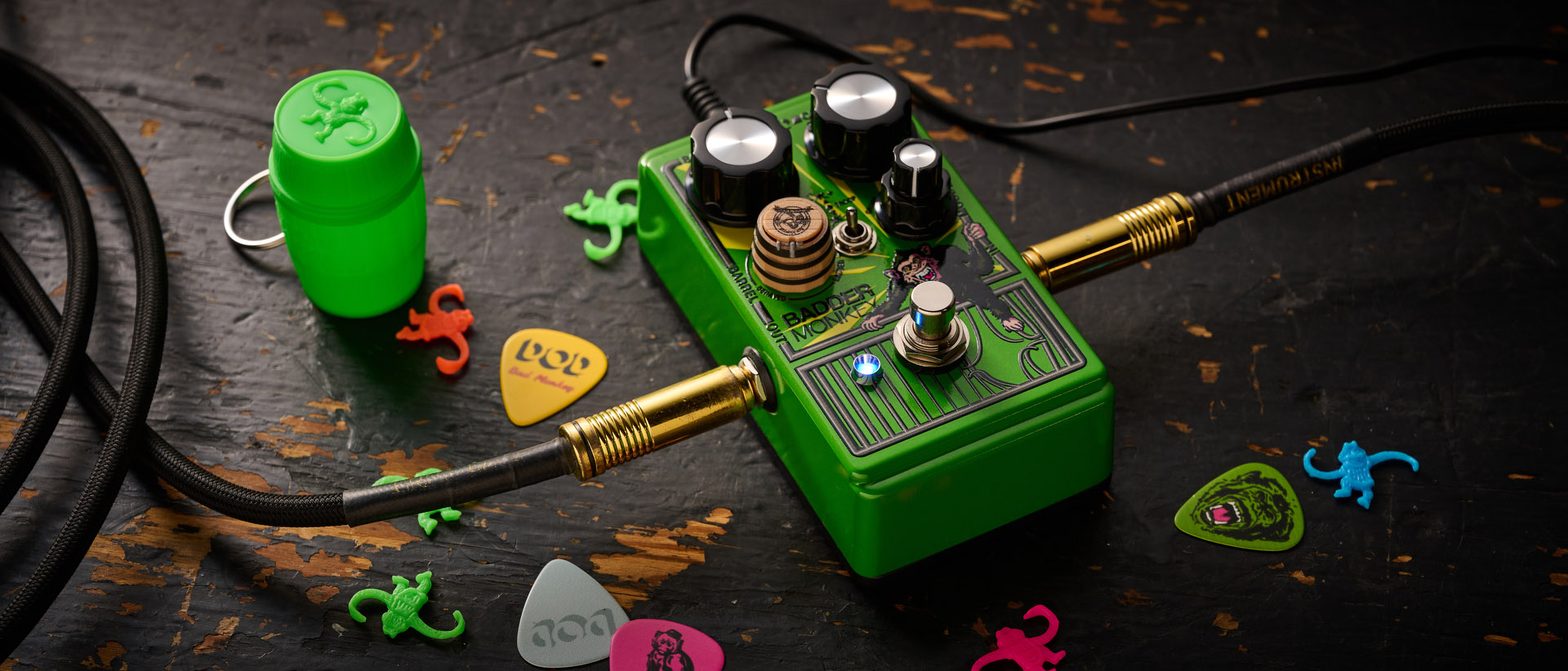Meet the NUX Trident, a next-level guitar processor that’s “portable, powerful and chock full of modern and classic tones”
Affordable, feature-packed unit boasts 27 amp models powered by updated proprietary algorithm, 27 cab IRs, multiple reverb, delay and modulation effects, built-in looper and much, much more
In the market for a next-level guitar processor that’s portable and powerful and chock full of modern and classic tones? Look no further than NUX’s mind-bogglingly flexible Trident. As Guitar World Tech Editor Paul Riario says, the Trident is “the next step up from NUX’s popular integrated guitar processor floorboard, the Cerberus, boasting comprehensive guitar modeling and also existing as a full-fledged guitar rig for live use and the studio.”
The Trident offers a wide array of onboard effects and numerous sound sculpting parameters, and is equipped with NUX’s powerful, updated TS/AC-4K White-box Amp Modeling Algorithm, which promises to supply emulations of numerous amp models.
According to NUX, the new TSAC-4K algorithm is twice as complex as previous versions, and works alongside analog circuits to achieve “a clear sound with low noise levels.” And just like their real counterparts, these amp models – 27 in all, with a range of Marshall, Fender, Matchless, Hiwatt, Roland and other classic brands – boast high/low inputs, four inputs for patch cable jumping, toggle switches for voicing and other tone-tweaking extras. “All of this translates to a more dynamic feel and playability and realism in both amp and cab sounds,” Paul says.

The Trident is loaded with 27 cab IRs that can be altered via four microphone models and three positions, and additional IRs can be added courtesy of the Trident edit software. Other features include 11 modulations, three delays and four reverb effects, ten independent moveable signal blocks, 1024 samples IR resolution, real-knob adjusting for effects and amp models, 96 preset slots and a 30-second phrase looper that can be placed either Pre or Post within the signal path.
Additionally, the Trident features two DSPs – one for the amps, and one for the effects, and there’s also a USB audio interface, MIDI in/out, expression pedal jack, send/return effect loop, stereo balanced DI outs and more, and it all comes housed in a one-piece die-cast aluminium chassis.
What’s more, the send/return loop can be placed anywhere along the signal path, independent of the Trident Input. This means you can place your pedals at the start of the signal path with the Trident Input (like an overdrive or boost, for example), and also use the send/return to place additional pedals along the path (like reverb and delay). And you can also use the Trident as a re-amp device via its USB-C connection.
“I’m knocked out by the world-class sounds and intuitive user interface of the Trident, which makes tweaking its tones a breeze,” Paul says. “What’s great is NUX’s proprietary White-box Amp Modeling Algorithm replicates the sound and playability of some of the most renowned amps.”
He continues, “With its advanced functionality and features, the NUX Trident is destined to become one of the best guitar modeling processors at its price point.”
To see the Trident in action, check out the demo video above.
And for more information, head to NUX EFX.
All the latest guitar news, interviews, lessons, reviews, deals and more, direct to your inbox!
Since 1980, Guitar World has been the ultimate resource for guitarists. Whether you want to learn the techniques employed by your guitar heroes, read about their latest projects or simply need to know which guitar is the right one to buy, Guitar World is the place to look.

